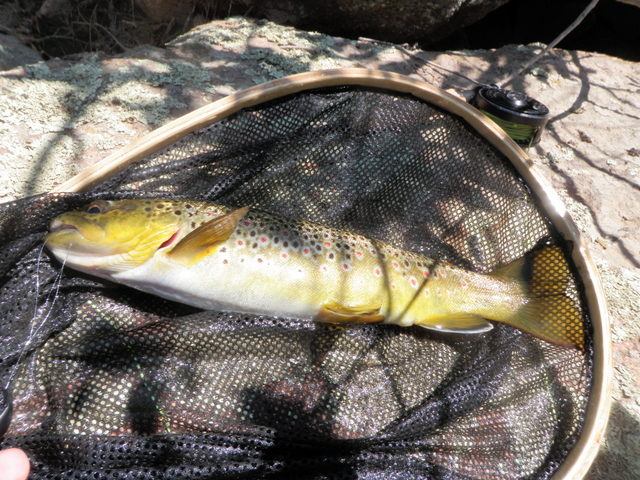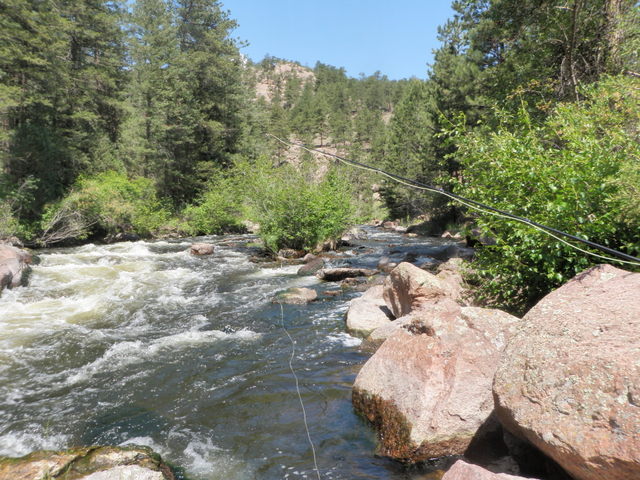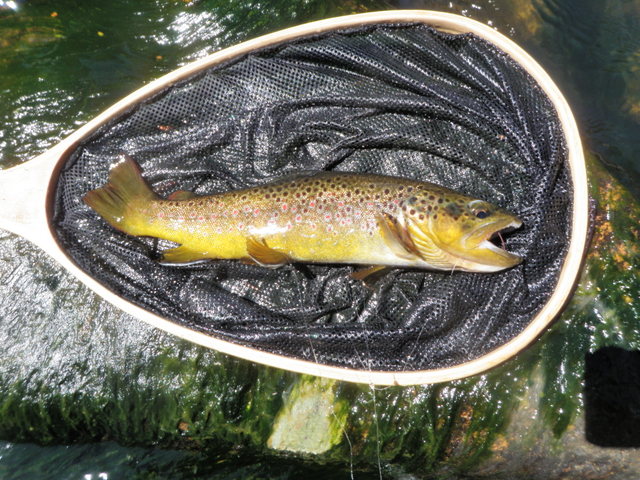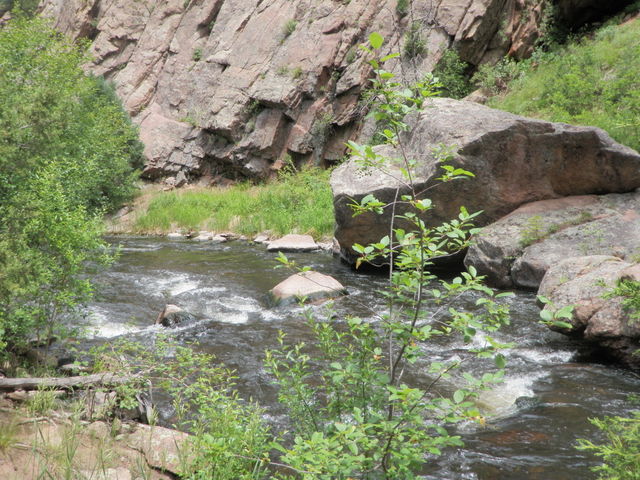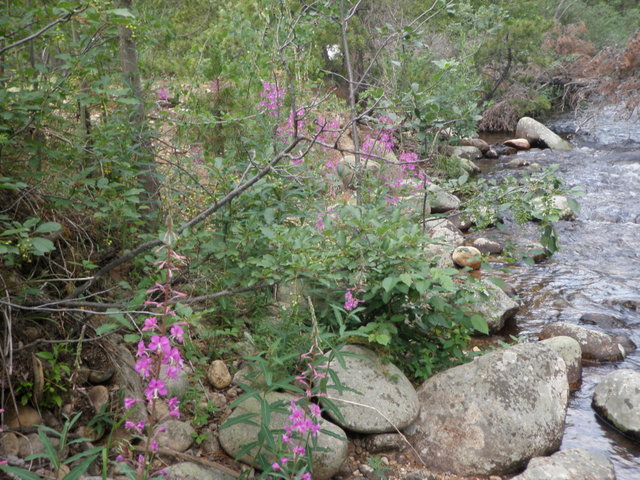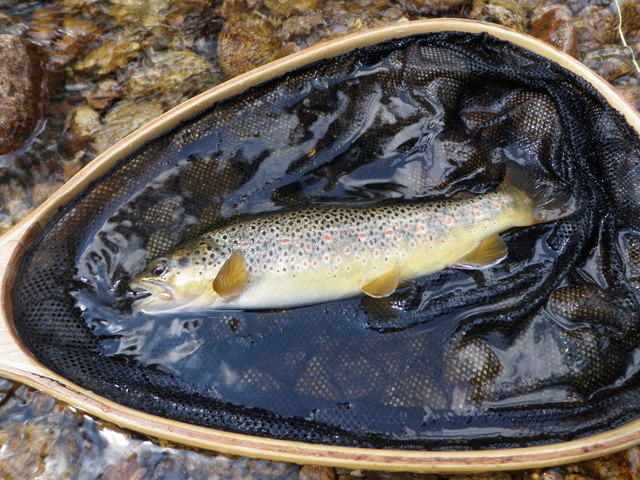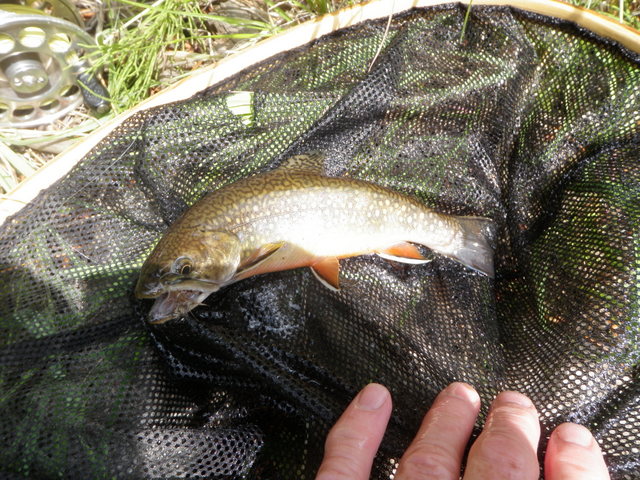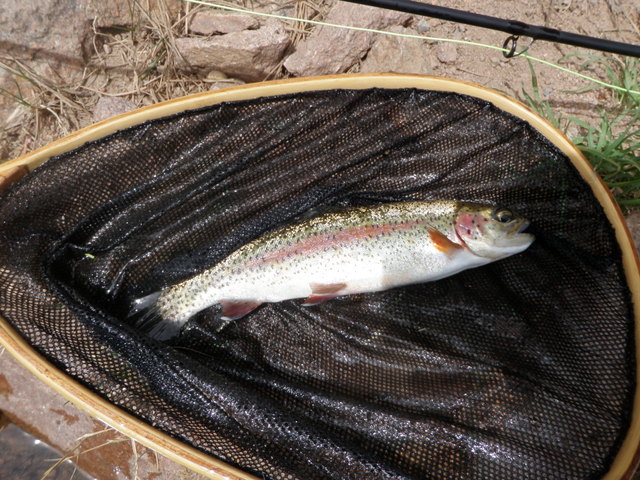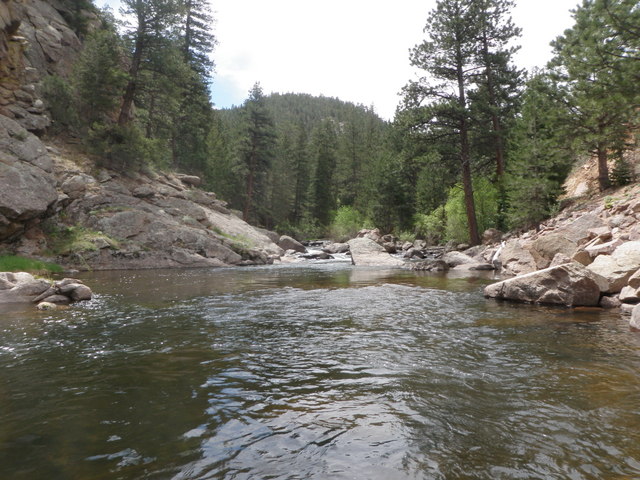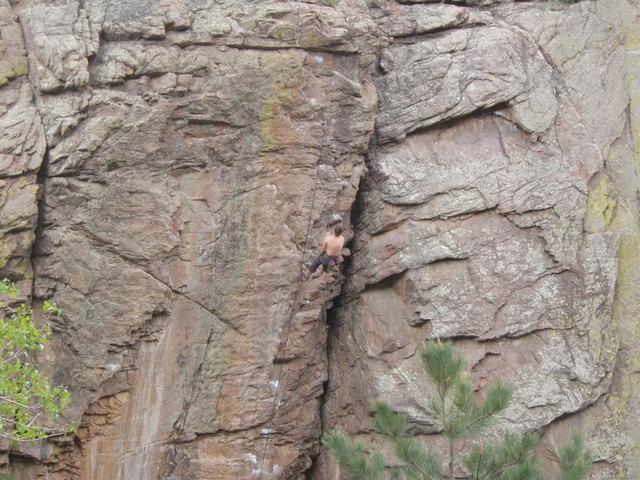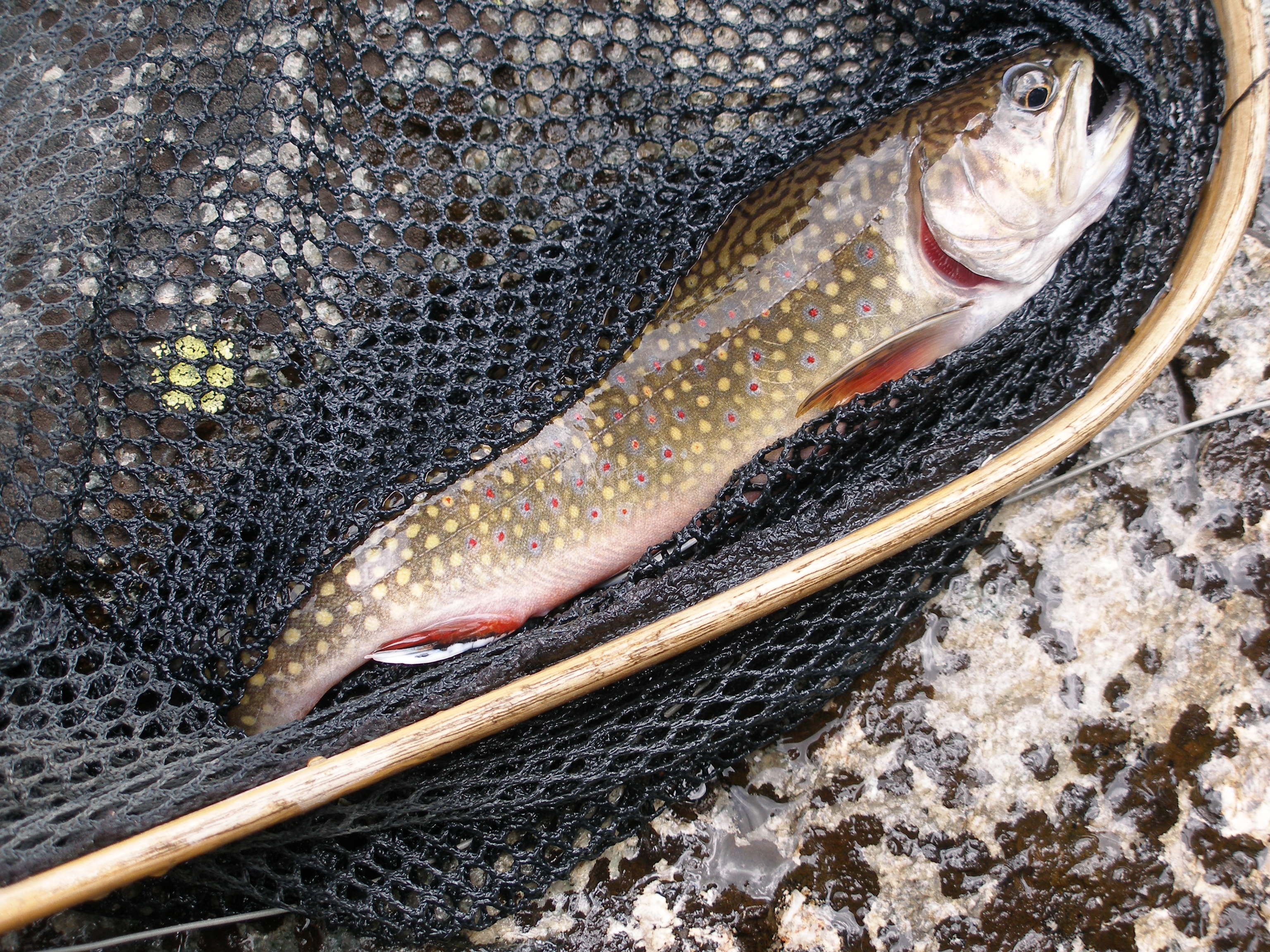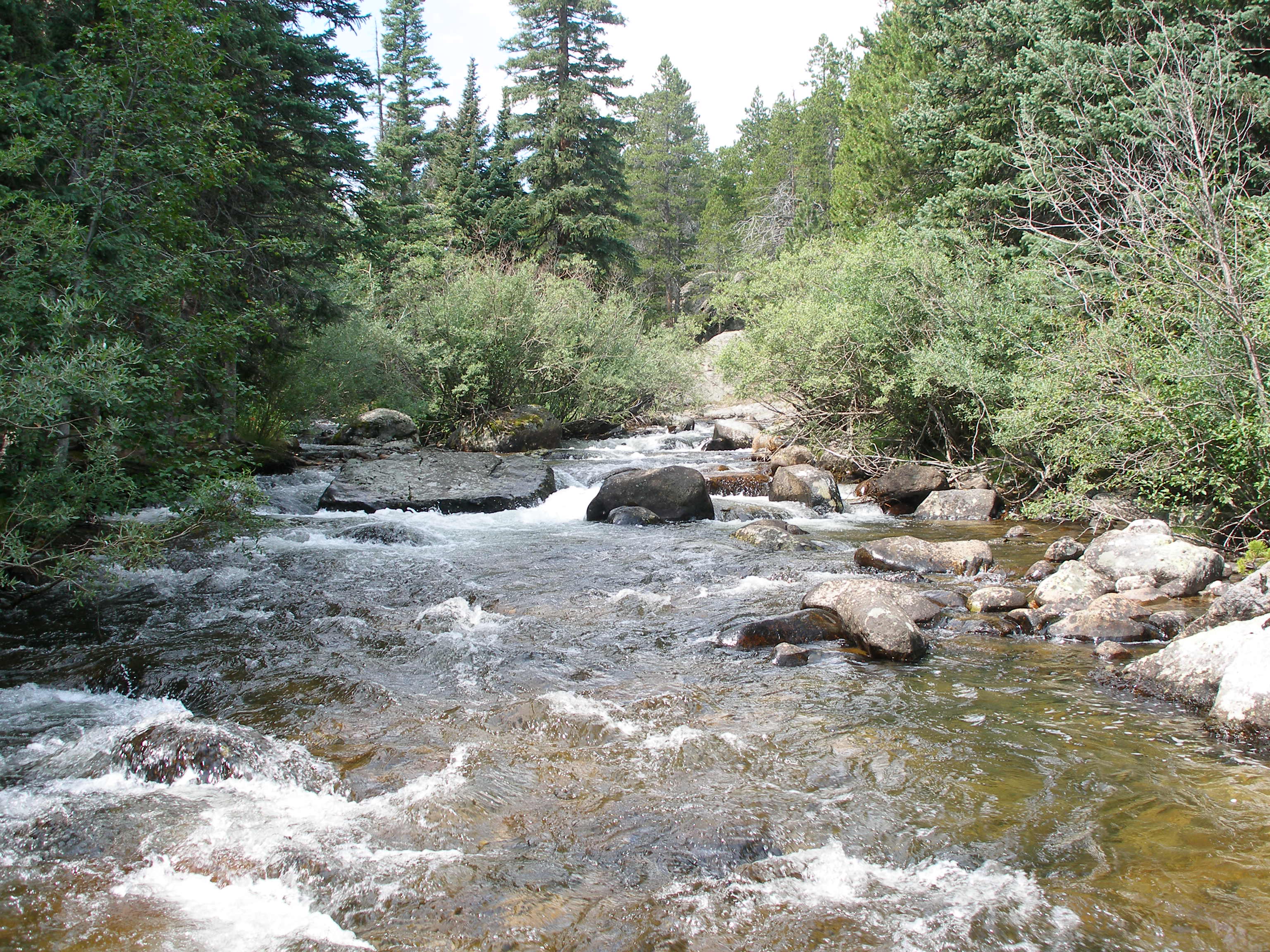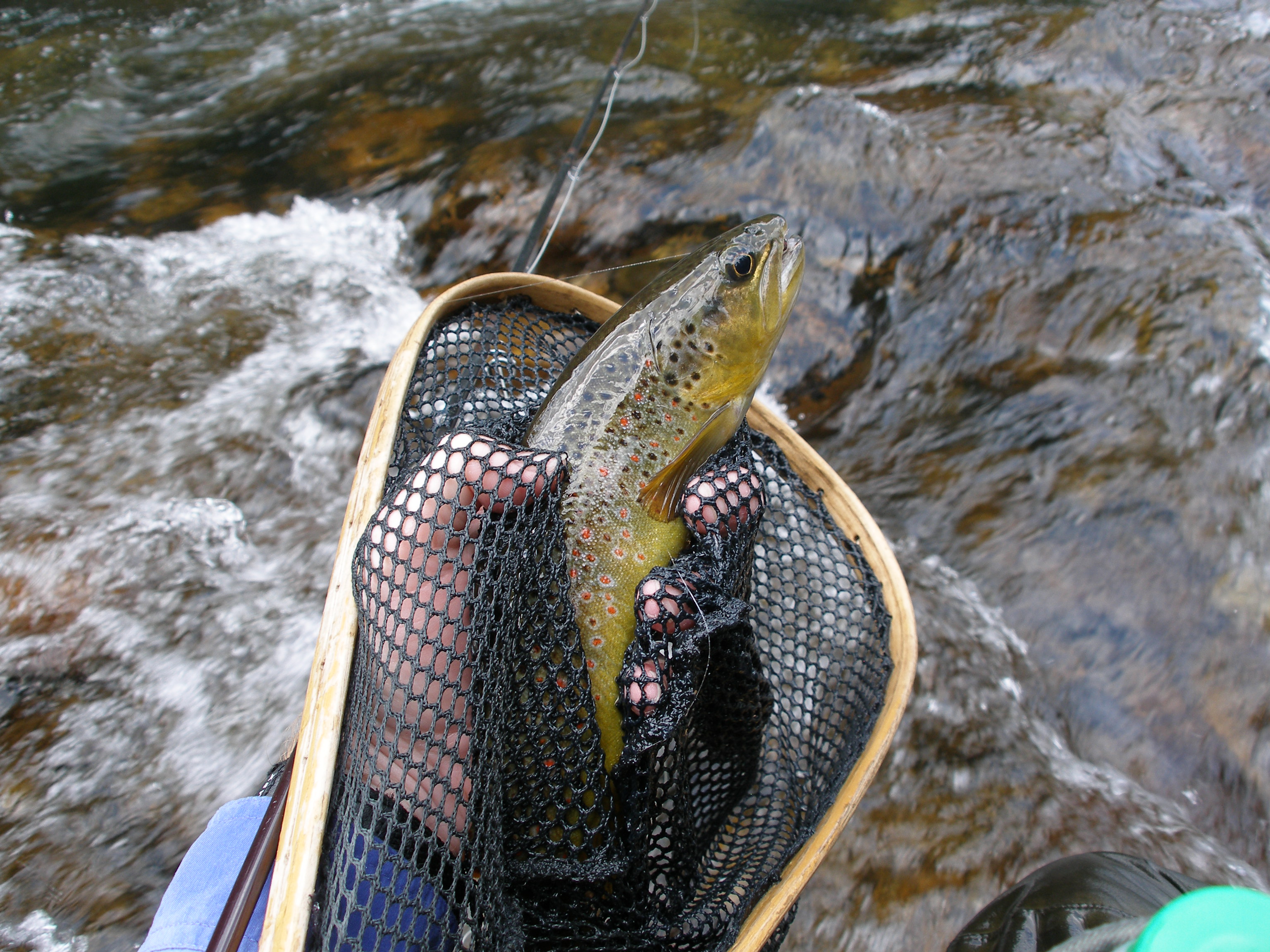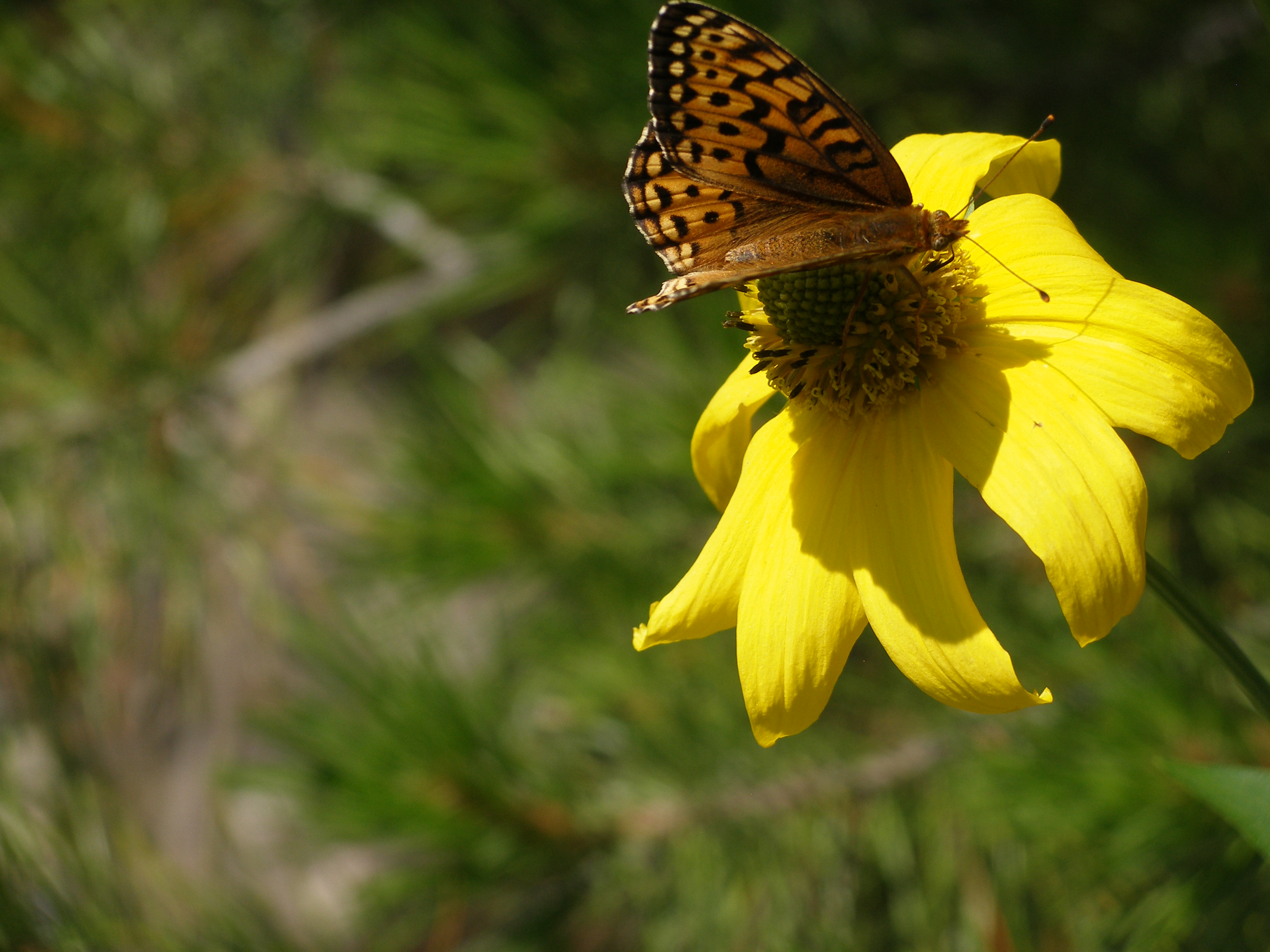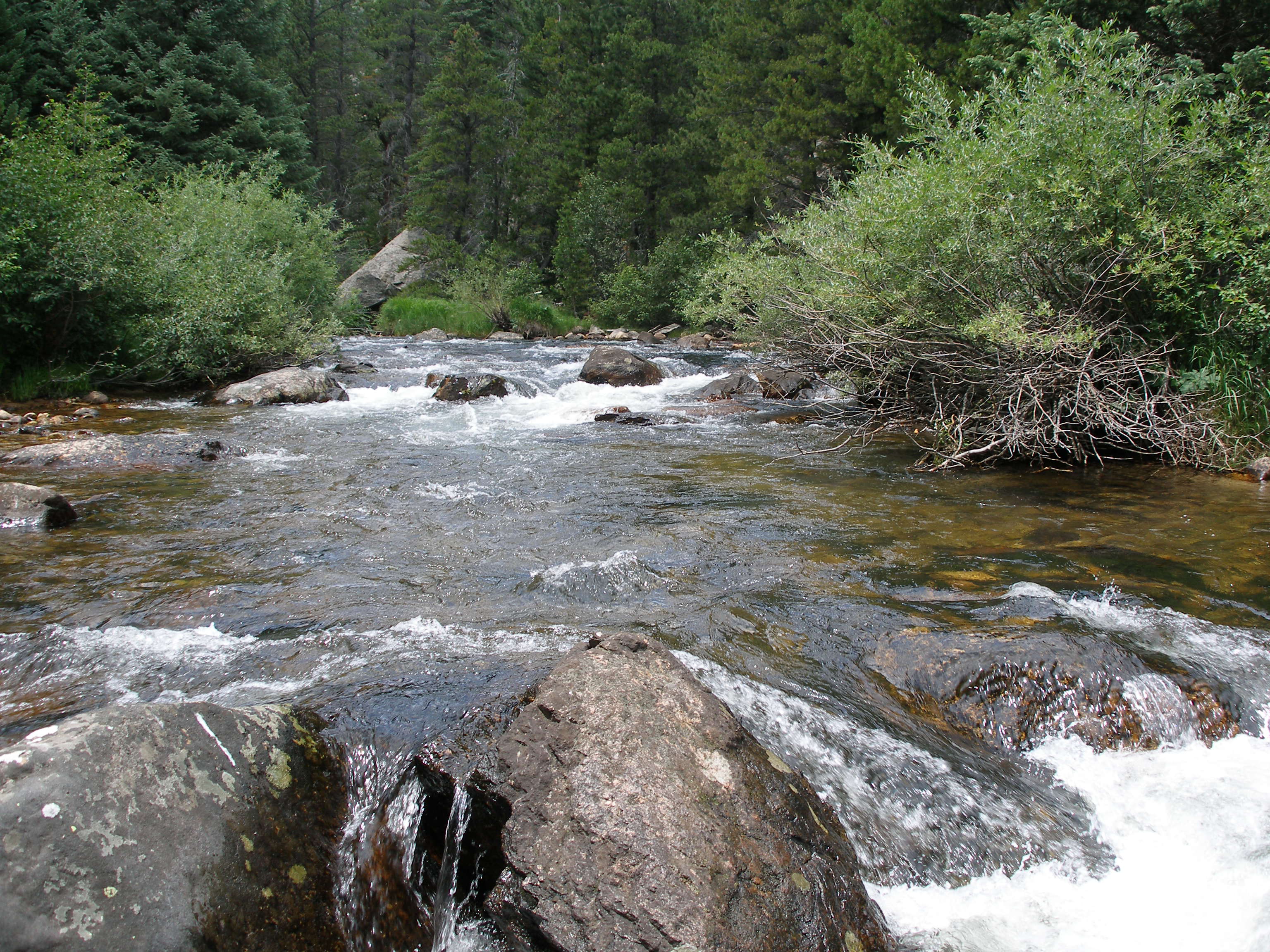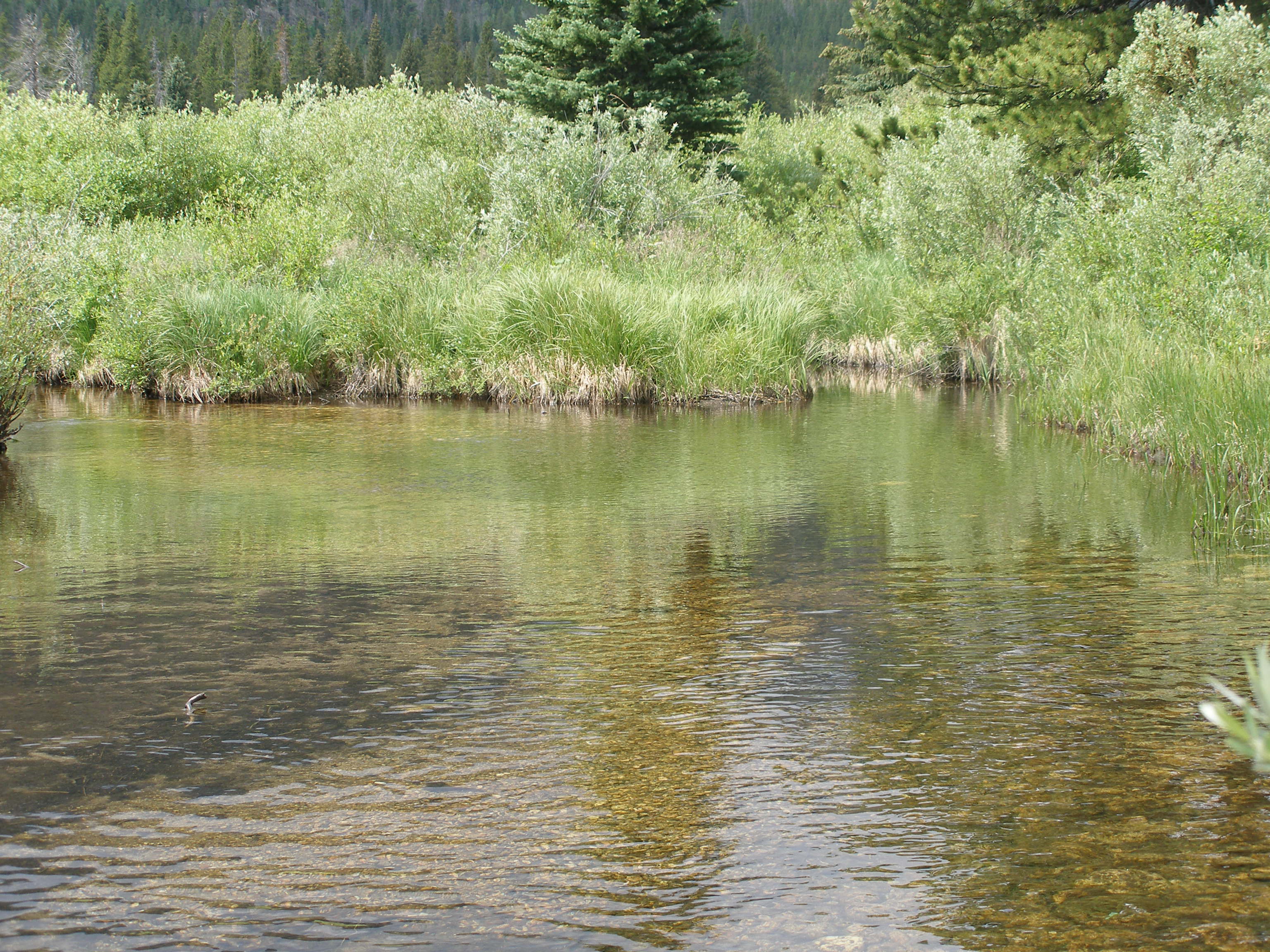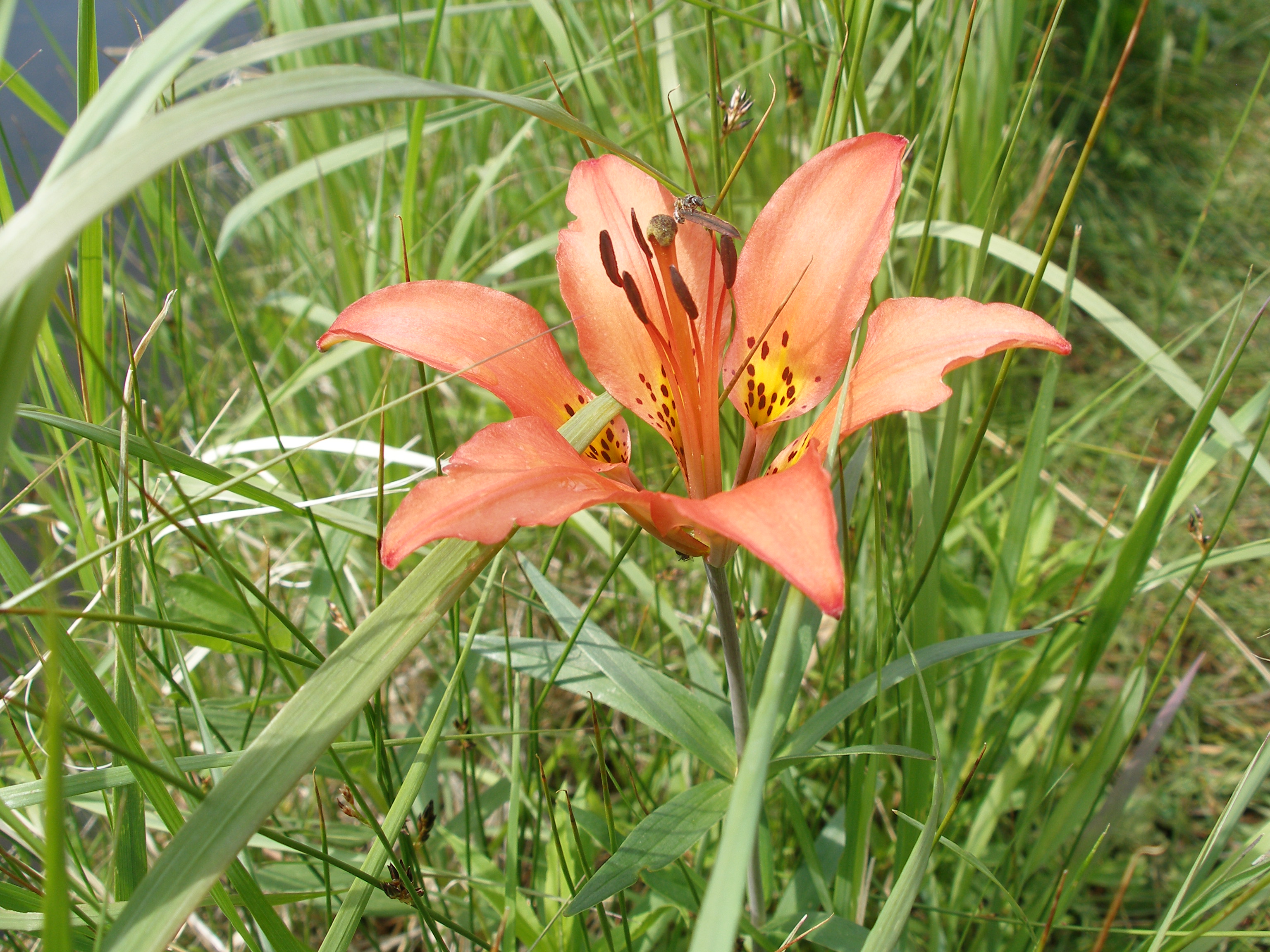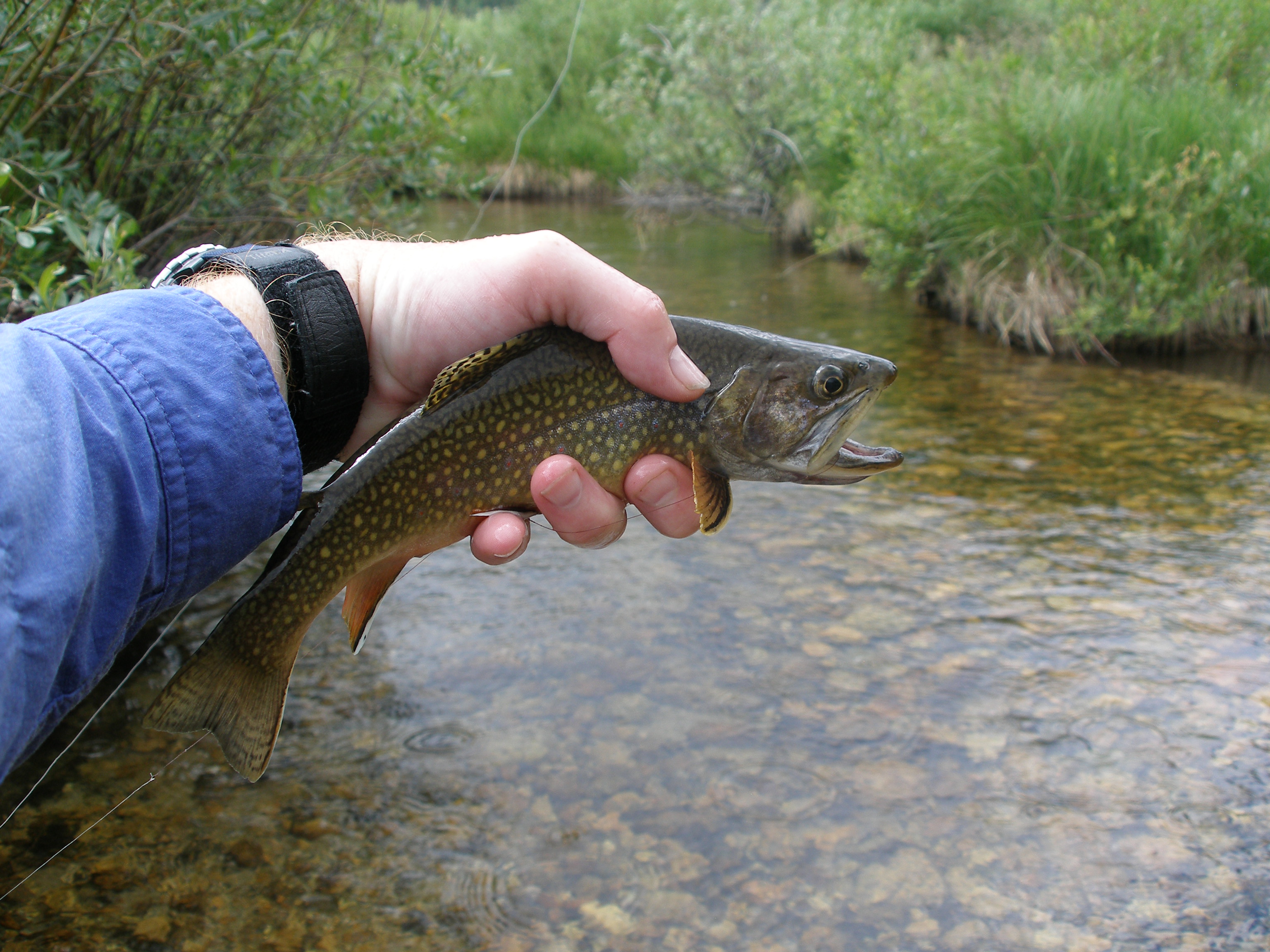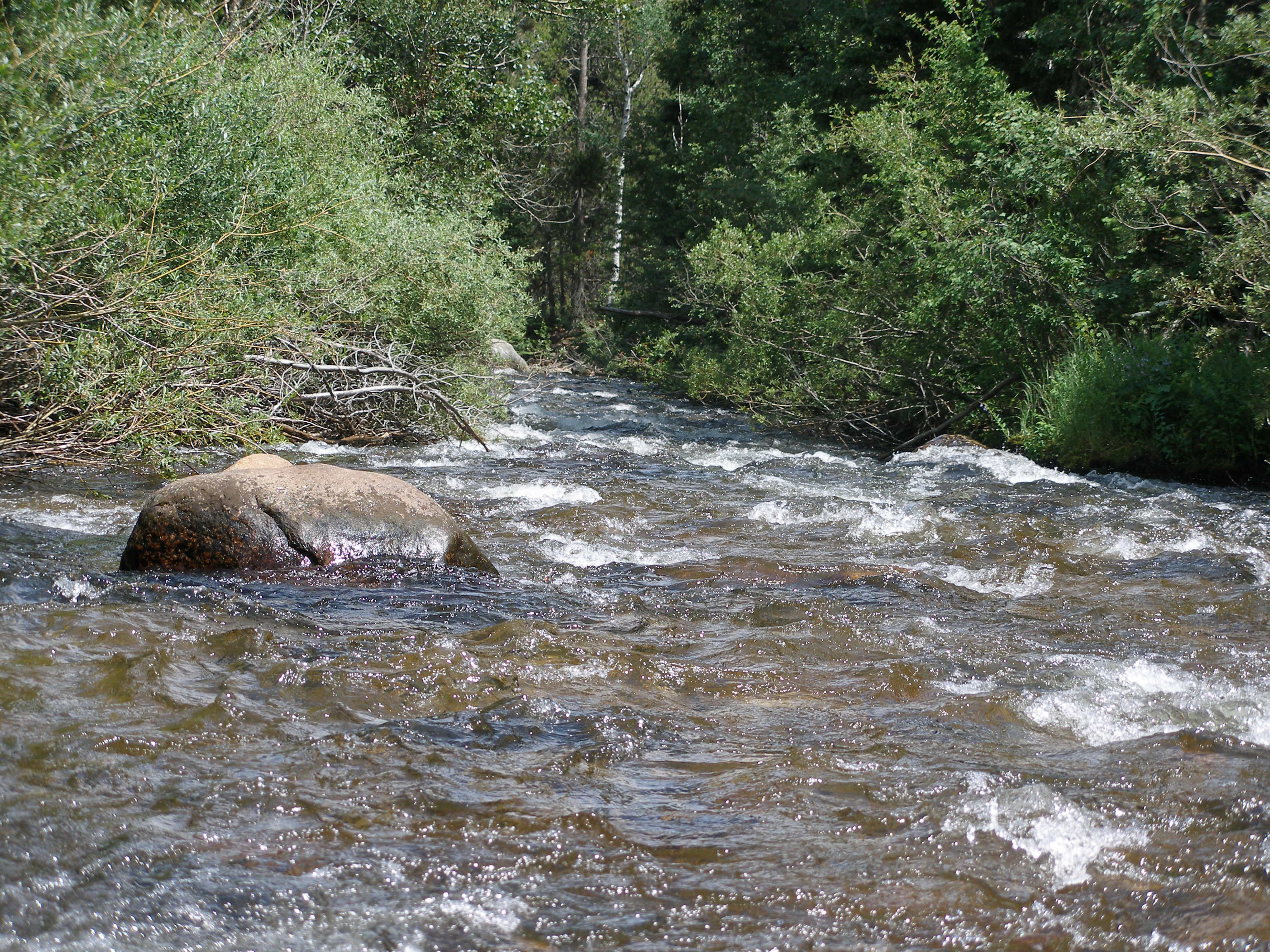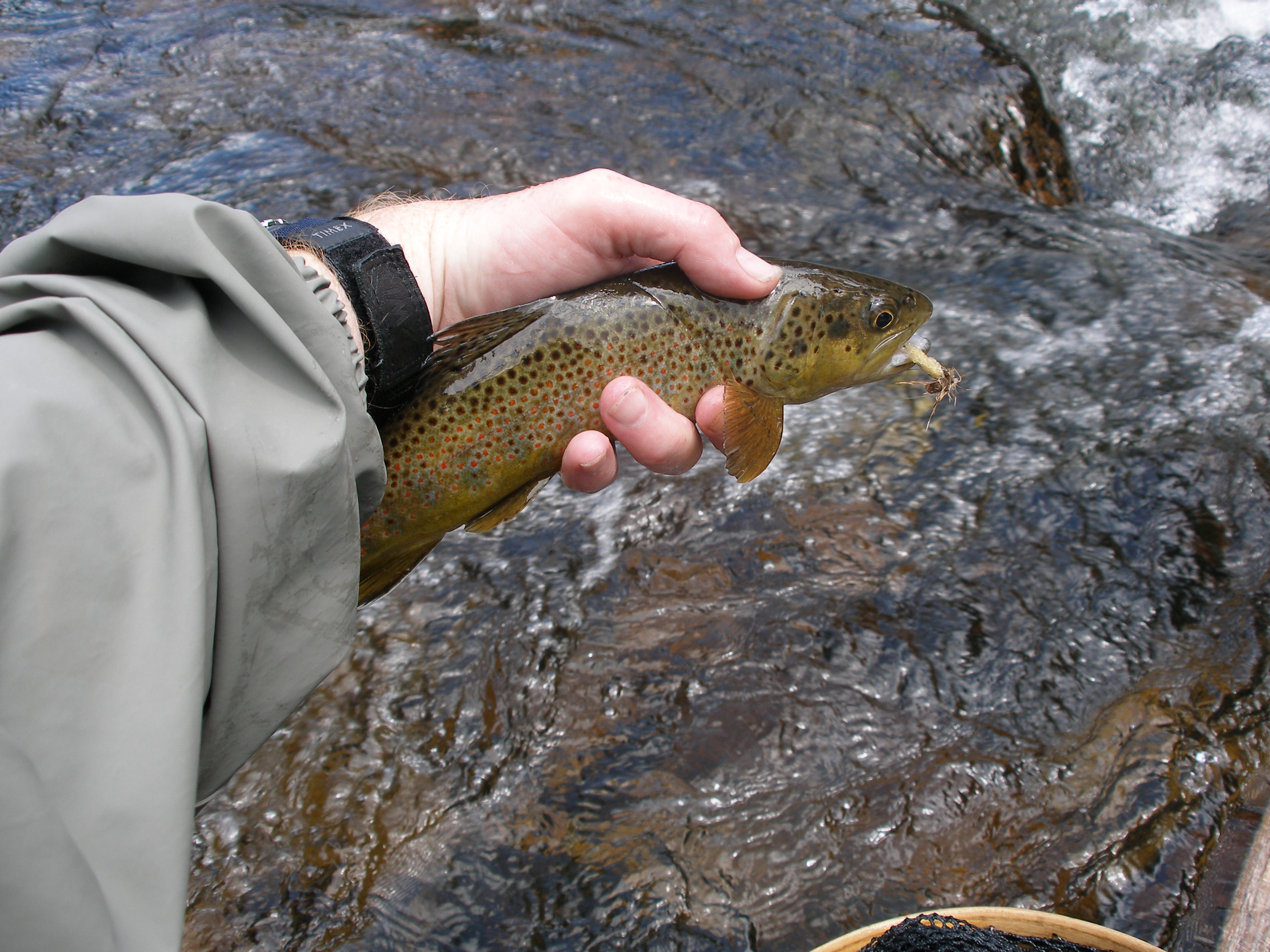Time: 11:30AM – 3:30PM
Location: Below Buttonrock Reservoir
North Fork of the St. Vrain 02/22/2017 Photo Album
Doubt and low confidence were my companions, as I planned another fishing trip for Wednesday February 22. I landed over 1,000 fish in 2016, so how could these feelings plague my thoughts? I injured my knee while skiing at Breckenridge on February 6, and the swelling and pain subsided, while a band of soreness and puffiness remained along the inside of my left knee. I resumed fishing with an elastic knee brace, and cycling did not seem to aggravate the injury, but I sorely missed my running schedule. My first doubt revolved around my ability to resume my activities and maintain my fitness for long hikes to remote fishing destinations.
Winter fishing has rarely been a positive experience for me. When my hands and feet are numb and aching, fly fishing ceases to be fun. I landed five trout from Clear Creek on Monday, but I suffered through some periods of discomfort when my hands became wet in the process of releasing fish. I carry low confidence when it comes to winter fishing.
The destination that I chose for my trip on Wednesday was the North Fork of the St. Vrain Creek below Buttonrock Reservoir. This area was heavily impacted by the 2013 flooding, and while I experienced two decent outings there early in the 2016 season, I continued to harbor doubts about the quality of the post-flood fishery.
Excellent Flows
Despite high temperatures in Denver of 75 degrees on Tuesday, I abstained from fishing, since the wind forecast was quite adverse. The front range mountain towns that I checked on Weather Underground projected wind velocity in the 20-30 MPH range. Fly fishing in these conditions ceases to be fun. Highs on Wednesday were forecast to approach the mid-60’s, and the wind was expected to subside to the 10-12 MPH range. With cold weather moving in on Thursday, I elected to take advantage of one final day of mild weather, and I departed for the North Fork of the St. Vrain Creek at 9AM.
I chose the St. Vrain, as I sought variety after spending two afternoons on Clear Creek. Two outings in March 2016 provided some decent action, and I was curious to see if the fishery improved, after another year elapsed. The flows were 25 cfs, and I recalled that level to be nearly ideal. I arrived at the parking lot below the gate by 10:30 and joined five or six vehicles already present. The road and trail along the St. Vrain in this area is very popular with hikers, runners and dog walkers; and I never encountered another fishermen during my stay.
The air temperature was 48 degrees and the wind was fairly strong, so I pulled on my down vest and billed New Zealand hat with ear flaps, and then I embarked on a one mile hike. Along the way I passed some trucks and road building equipment, and I realized that stream improvements were in progress just above the small Longmont Reservoir near the beginning of the hike. Halfway toward my destination, I began to curse my decision to wear a down vest, as the exertion warmed my body excessively. I had no place to stash the vest, so I resolved to endure.
No. 1 with Hares Ear in Upper Lip
When I reached a point .2 miles below a Y in the dirt road, I angled down a rocky bank and approached the stream. As it turned out some clouds blocked the sun in the morning, and the wind escalated, and I was quite pleased to have my ear flaps and down vest in place. I began my quest for St. Vrain trout with a yellow fat Albert and trailed a size 16 copper john and size 14 beadhead hares ear nymph. After fifteen minutes of prospecting likely holding locations, the fat Albert paused in a slow deep pool, and I reacted with a hook set that delivered a thrashing ten inch brown trout to my net. My low confidence bumped up a few notches with this early catch.
Big Terrestrials in February
For the remainder of the morning I moved upstream at a careful pace and landed three additional trout. Much to my amazement two rocketed from the depths in order to mash the size 8 fat Albert, that I knotted to my line essentially as an indicator. The fourth morning trout chomped the copper john, so all my offerings were attracting attention. One of the fat Albert gulpers created a monofilament nightmare, when it wrapped both nymphs around itself in a futile effort to escape. This circumstance forced me to clip off both nymphs and battle the wind and the evaporation effect of cold hands in order to eliminate the snarl and resume fishing. I possessed the foresight to stuff two hand warmers in my wader pockets, and these proved to be saviors, when my hands reached the status of gnarled human claws.
A 12 Inch Brown Rose from The Lip and Sucked in the Fat Albert
At 12:30 I stopped for lunch near the junction in the dirt road, and I was quite pleased that I landed four trout in an hour of fishing. After my small snack I resumed my upstream migration, and I refined my approach to focus on slow moving deep pockets and pools. The wind died back somewhat, and the sun reappeared; and these weather changes improved my spirits and rendered fly fishing much more enjoyable.
I Love This Fly
Between 1PM and 3:30 I progressed upstream for another .5 mile and added seven trout to my count. During the day all the landed fish were brown trout except for two rainbows that managed to nestle in my net. Two additional fish slurped the fat Albert in the afternoon. During Wednesday the copper john produced two trout, and the hares ear accounted for five, while the fat Albert incremented the fish counter by four. During the last 30 minutes, I moved the hares ear to the top position and exchanged the copper john for a size 20 mercury flashback black beauty. This was a response to the small swarms of midges that hovered over several pools when the wind subsided. After the change I suffered several momentary hook ups, which I attributed to the diminutive hook size of the midge larva.
Fantastic Water Disappointed
A double digit fish day on February 22 was a delightful surprise. The flows were ideal, the wind subsided, the sun dominated in the afternoon, and I thoroughly enjoyed a pleasant day on the North Fork of St. Vrain Creek. My knee held up, and I managed a two mile round trip hike without aggravating the injury. The temperature rose to a level that enabled comfortable fishing, and my reservations about fish density and size on the recovering creek were overblown. The fish remain small, but most of the likely attractive spots delivered fish, so the quantity of fish is improving.
Fish Landed: 11

